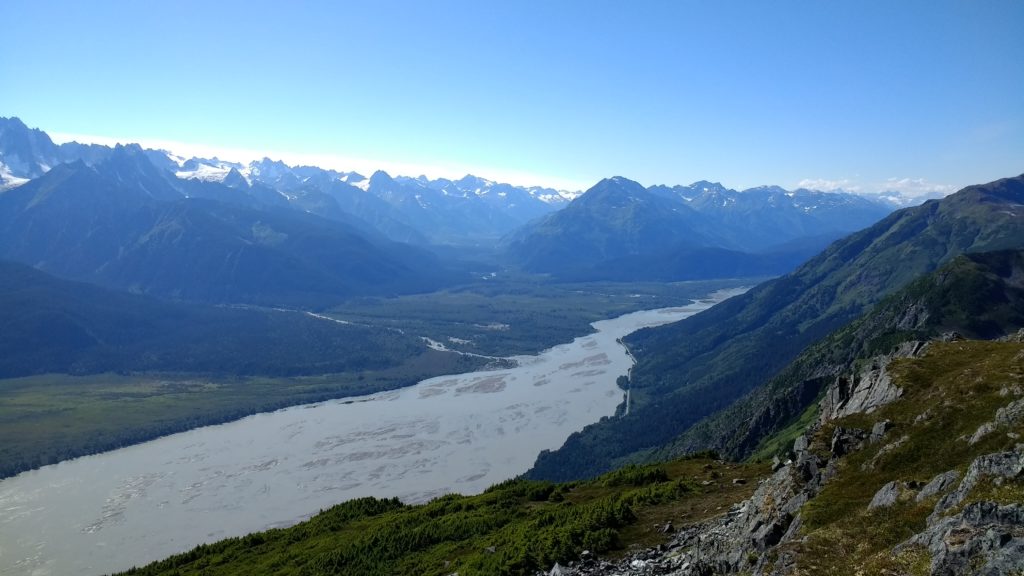
The Chilkat River as seen from Mount Ripinsky in summer of 2017. (Emily Files)
The Chilkat River is an important resource for subsistence and sport fishing, hunting and trapping, commercial tours, recreation and more. On Monday, Chilkat Valley residents started a conversation about uses, conflicts, and maintaining access as the Haines Highway improvement project ramps up.
Chilkat Valley residents use the river in a lot of different ways.
“I subsistence, sport fish, hunt, trap – pretty much use that since I was born and raised here. Just want to maintain what we’ve got and maybe make it better for the people that are here,” said Gabe Thomas
“I subsistence fish, sport fish, and also use the river primarily for river put-ins and take-outs for the rafting business,” said Andy Hedden, owner of Haines Rafting Company.
“I work for Fish and Game,” said Rich Chapell. “We do a lot of research projects that use the river. And also I recreate on the river, mostly boating and fishing.”
“I hunt, fish, subsistence fish, recreate, snowmachine, everything,” said Ryan Cook. “I have property in the Kicking Horse. Lived here all my life, always used the river.”
The conversation about accessing the river started earlier this year, when Rainbow Glacier Adventures owner Joe Ordonez applied to expand his commercial tour permit. The company offers guided rafting on the Chilkat River.
When the request went to the assembly, it generated a discussion about crowding at popular access points. One in particular was identified as an important area for salmon spawning.
Another factor: the state Department of Transportation’s Haines Highway improvement project is ramping up.
Haines Tourism Director Carolann Wooton led the community meeting.
“It was real evident we needed to have a conversation,” said Wooton. “As we start thinking about the highway project moving forward. There’s a lot of questions from people about what’s going to happen when the road goes through. Are we going to lose access are we going to gain access.”
Jim Scholl is with DOT. He said the state plans to do its best to maintain current access.
“We work with federal highways,” said Scholl. “What federal highways wanted and what we agreed is that we should maintain existing access points. If we absolutely have to close something down is please restore access very close.”
Residents discussed key access points along the river, and conflicts that already occur in certain spots.
This was just the first of what will likely be a series of meetings. The next meeting is scheduled for April 30.








